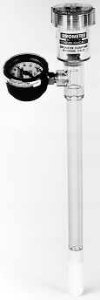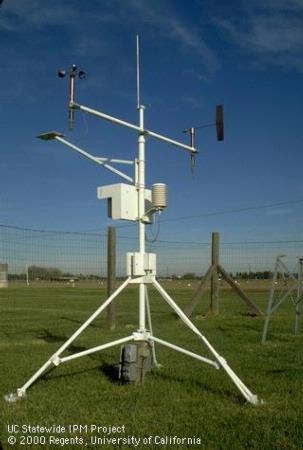So, every few weeks the question comes up of whether to install soil moisture meters which leads to the question of which to buy and install or have installed. And then come the questions of what do the readings mean and why aren't the readings consistent. Or maybe this question arrives after the grower has installed the sensors or system and the values don't conform to a known or knowable pattern.
The first question to the grower is why they want to install soil moisture sensors or a system. Everyone has a different answer which I've always found interesting. Usually it boils down to having more or better information, although it's hard to beat a good old soil auger. Which takes time and labor.
So once that is cleared up, it comes down to what area they want to monitor. Is it an acre, 10 acres, 50 acres, 100 acres, 200 acres, 1,000 etc.? What are the different irrigation blocks, soil types, aspects? How complex is the area that is to be monitored? Do they need one monitoring site or many? Can the information be gathered in the field, or does it need to be accessed from a distance? Linked by hardwire, infrared, cell phone, wifi, satellite, etc.?
Then the question is does the grower do the installation or is it done by a company? And then whatever the case is, who maintains the system and for that matter, who maintains the information? What software is used and who interprets it?
And what sensors are being used: tension, electrical resistance, conductance, capacitance, electromagnetic…….? The list seems to go on and there are no models and brands coming out on a regular basis. And how reliable are the sensors? What's their lifespan? And what are they measuring and in what units? How affected are the readings by salinity and what soil volume are they measuring? And how important is their placement?
This last point is so often overlooked. The sensor needs to be in the active root zone where water is being taken up. Not where it's convenient to read, not where the plants cant use the water. Placement is so often overlooked.
And then how much do you want to spend? $100 per installation, $1000? With a monthly or yearly maintenance fee or none? Who responds when there are problems?
Wow, so yeah, there are lots of questions. Here's a chart that might help categorize some of the questions:
|
Method |
Cost |
Ease of use |
Accuracy |
Reliability |
Salt-affected |
Stationary |
|
Gypsum block |
L |
H |
H |
H |
L |
YES |
|
Tensiometer |
L |
M |
H |
M |
L |
YES |
|
Portable tensiometer |
M |
M |
H |
M |
L |
NO |
|
Solid-state tensiometer |
M |
H |
H |
H |
L |
YES |
|
Time domain reflectometer |
H |
M |
H |
H |
M |
BOTH |
|
Neutron probe |
H |
L |
H |
H |
L |
YES |
|
Feel (soil probe) |
L |
H |
H |
H |
L |
NO |
|
Gravimetric (oven) |
L |
M |
H |
H |
L |
NO |
|
Conductance |
L |
H |
M |
M |
H |
BOTH |
|
Capacitance |
M |
H |
M |
H |
M |
BOTH |
H, high; M, medium; L, low
And the good Almond Doctor might help some more:
http://thealmonddoctor.com/2015/07/10/soil-moisture-sensing-systems/
And maybe some of these publications can help sort out what questions to ask
http://calag.ucanr.edu/Archive/?article=ca.v054n03p38
http://calag.ucanr.edu/Archive/?article=ca.v054n03p47
http://anrcatalog.ucanr.edu/Details.aspx?itemNo=21635
Khaled Bali, our Irrigation Specialist at Kearney Research and Education Center near Fresno, is part of a group in the process of evaluating different types and models of soil moisture sensors. He should have a publication that can more accurately sort through the many sensor choices that are available at this time. But in time, there should be more models on the market and new update will be necessary.
The question, though, is to ask yourself how irrigation is being done and how it can be improved. The basics of design, maintenance, distribution uniformity and how scheduling is being currently done – when and how much to apply. Definitely, soil moisture sensors can help, but you gotta know how to use them and maintain them, just like the whole irrigation system.
A grower who uses tensiometers told me that people think of soil sensors as though they were reading a book. Something cut and dried. A simple plot line that you follow. Irrigation is not a book. There are many other subplots to irrigation than just reading the digital face. Looking at the weather, evapotranspiration, the tree, how fast the moisture is depleted, how deep the moisture is being pulled from all contribute to the "sensors" used to irrigate. Use them all. Even though this grower has irrigators on 250 acres of trees, he also checks the orchard tensiometers at least once a week on his own to confirm all of his senses.
Attached Images:

